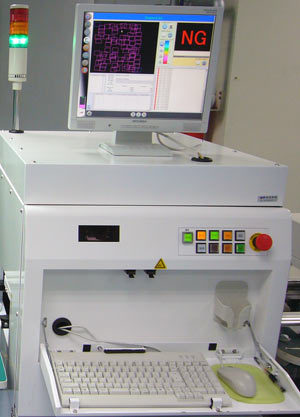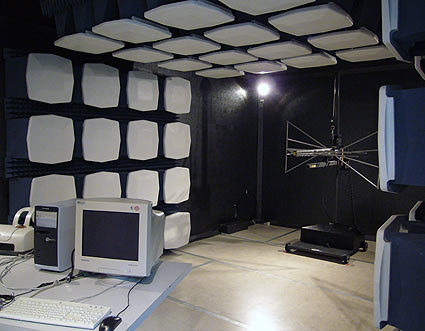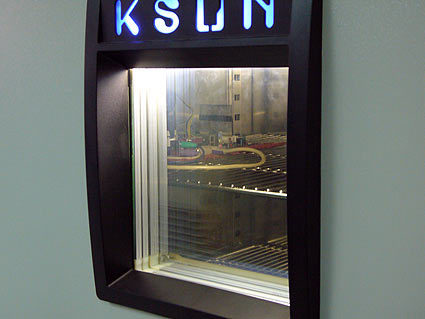Taiwan's New Economy is Sink or Swim
Optical Inspection
Automatic optical inspection takes high-definition images of certain product details and compares these with stored images of an ideal scenario.
While it makes sense to perform visual product inspection when labor cost is low, this way of controling product quality is of course not fail-safe. AOI (automated optical inspection) requires expensive hardware that uses high definition cameras to simply photograph critical (or all) components of a motherboard or graphics card. These images are then compared to stored images of how a particular shot should look like.
EMI Lab Testing
An EMI lab is required to ensure that system products (PCs or notebooks) comply with FCC and CE regulations.
PC systems and notebooks need to be tested in a so-called EMI lab to measure the level of electro-magnetic interference. This is very important to pass the certifications for FCC or CE, and VCCI specification requirements (Voluntary Control Council for Interference), for those who intend to sell PCs or notebooks in North America or Europe. Since you need a roomy chamber that is insulated from the inside, earthed and shielded from the outside (don't forget the sensitive antennas and measurement devices either), such an EMI lab is too costly for everyone who does not at least belong to the 2nd tier of system or notebook builders.
Turn Up The Heat: Temperature Testing
The next step is to put system products into real-life stress, which, in the first place, is an increased environment temperature. Temperature testing can be done in different ways, and in fact it is performed in different ways to examine the reliability of a product. Some chambers are used to run systems at controlled temperature and humidity levels; others are capable of raising or dropping temperatures to shock the products. It highly depends on the OEM customer whether and which of these tests you need to do, but again it is important to know that no one except the top players can afford this equipment.
Temperature chambers either provide controlled temperature and humidity conditions or are used to heat a product up or cool it down within very short time to check material resilience.
Get Tom's Hardware's best news and in-depth reviews, straight to your inbox.
Current page: Optical Inspection
Prev Page Barcodes Everywhere Next Page Cut Through Motherboards: Cross Section TestTom's Hardware is the leading destination for hardcore computer enthusiasts. We cover everything from processors to 3D printers, single-board computers, SSDs and high-end gaming rigs, empowering readers to make the most of the tech they love, keep up on the latest developments and buy the right gear. Our staff has more than 100 years of combined experience covering news, solving tech problems and reviewing components and systems.



